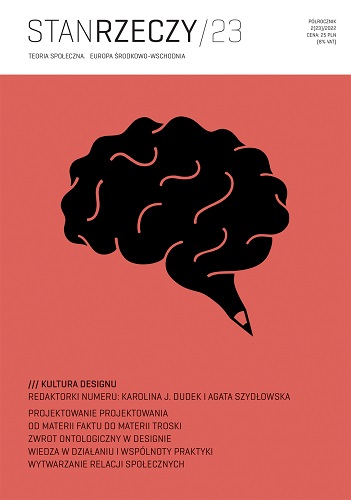
No. 2(23)Culture of Design

Issue description
If it were possible, we would ask objects and other designed objects not what they are, but what they enable and – necessarily – what they prevent. A table allows you to meet for a meal, while a barrier prevents you from passing. Viewed in this way, design will always be entangled in networks of relationships between animate and inanimate entities. It tells stories about them and co-creates them. It is an often unnoticed but significant element of modernity, and now a co-conspirator in climate change and at the same time a source of hope for a more justly ordered, more sustainable world.
The authors of the texts in this issue come from a variety of academic fields – they are both designers and social scientists, but often the boundaries between these fields are difficult to draw. After all, design is an interdisciplinary and even transdisciplinary practice. It engages actors from different fields, and it itself appears in unexpected places: in a hospital, on a space station or in a square under a block of flats. At the same time, as the challenges facing designers grow, the teams developing solutions are expanding, and reflection and research methodology from the social sciences are being incorporated into design education. Also, design itself is accompanied by the production of specific knowledge.
Accordingly, the authors of the texts collected in this issue have taken it upon themselves to propose a post-disciplinary way of thinking about design and, by extension, the social field in general. Design, it turns out, can become an inspiring laboratory where the boundaries between practice and theory are blurred, just as they are blurred in this publication.